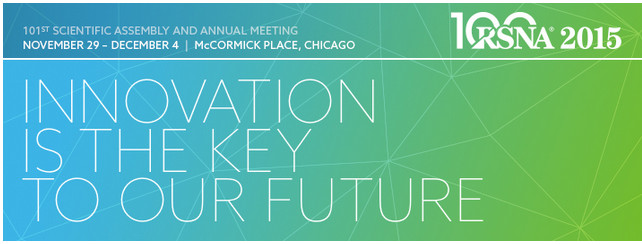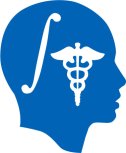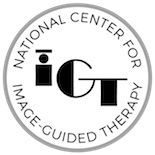Difference between revisions of "RSNA 2015"
| Line 9: | Line 9: | ||
[http://www.rsna.org/Annual_Meeting.aspx RSNA 2015] | [http://www.rsna.org/Annual_Meeting.aspx RSNA 2015] | ||
| + | |||
| + | ==Events== | ||
| + | '''A Practical Introduction to Structured Reporting Tools and Resources''' | ||
| + | |||
| + | Presenter: Andrey Fedorov (one of the talks of the refresher course) | ||
| + | |||
| + | Learning objectives: 1) Understand the advantages of using structured data capture tools for research at your institution. 2) Learn how RSNA Radlex and other popular lexicons can help reduce ambiguity in your data. 3) Learn about tools leveraging the National Cancer Institute’s Annotation Imaging and Markup (AIM) format for reporting radiologist observations and quantitative image analysis results. 4) Learn about tools leveraging DICOM for reporting quantitative image analysis results. | ||
| + | |||
| + | Abstract: Institutions across the world are sitting on a potential gold mine of imaging-related information about their patients, but many are unable to make use of it. Structured reporting helps address this problem by leveraging standardized lexicons and case report forms to extract meaningful information from images and enable easy reuse of the resulting data. | ||
| + | |||
| + | A number of initiatives have been developed by academic institutions, governments, and other organizations in order to help promote the broader use structured reporting in clinical imaging research. This course seeks to convey a basic understanding of structured reporting concepts and a summary of available tools and resources. Participants should leave the course with a knowledge of which tools/resources will best suit their needs and how to get started with using them. | ||
| + | |||
| + | Course Number: RCA22 (W20150200) | ||
| + | |||
| + | Date/Time: Nov 30 2015 / 10:30AM - 12:00PM | ||
| + | |||
| + | '''Quantitative Image Analysis Tools: Communicating Quantitative Image Analysis Results''' | ||
| + | |||
| + | Presenter: Andrey Fedorov | ||
| + | |||
| + | Learning objectives: 1) Review the meaning and importance of interoperability for quantitative image analysis tools. 2) Review specific use cases motivating standards-based interoperable communication of the analysis results. 3) Learn about free open source tools that can facilitate interoperable communication of analysis results using DICOM standard. | ||
| + | |||
| + | Abstract: Quantitative imaging holds tremendous but largely unrealized potential for objective characterization of disease and response to therapy. Quantitative imaging and analysis methods are actively researched by the community. Certain quantitation techniques are gradually becoming available both in the commercial products and clinical research platforms. As new quantitation tools are being introduced, tasks such as their integration into the clinical or research enterprise environment, comparison with similar existing tools and reproducible validation are becoming of critical importance. Such tasks require that the analysis tools provide the capability to communicate the analysis results using open and interoperable mechanisms. The use of open standards is also of utmost importance for building aggregate community repositories and data mining of the analysis results. The goal of this course is to build the understanding of the interoperability as applied to quantitative image analysis, with the focus on clinical research applications. | ||
| + | |||
| + | Course Number: RC825B (20150184) | ||
| + | |||
| + | Date/Time: Dec 4 2015 / 8:30AM - 10:00AM | ||
Revision as of 18:25, 23 April 2015
Home < RSNA 2015
| ||

|

|

|
Events
A Practical Introduction to Structured Reporting Tools and Resources
Presenter: Andrey Fedorov (one of the talks of the refresher course)
Learning objectives: 1) Understand the advantages of using structured data capture tools for research at your institution. 2) Learn how RSNA Radlex and other popular lexicons can help reduce ambiguity in your data. 3) Learn about tools leveraging the National Cancer Institute’s Annotation Imaging and Markup (AIM) format for reporting radiologist observations and quantitative image analysis results. 4) Learn about tools leveraging DICOM for reporting quantitative image analysis results.
Abstract: Institutions across the world are sitting on a potential gold mine of imaging-related information about their patients, but many are unable to make use of it. Structured reporting helps address this problem by leveraging standardized lexicons and case report forms to extract meaningful information from images and enable easy reuse of the resulting data.
A number of initiatives have been developed by academic institutions, governments, and other organizations in order to help promote the broader use structured reporting in clinical imaging research. This course seeks to convey a basic understanding of structured reporting concepts and a summary of available tools and resources. Participants should leave the course with a knowledge of which tools/resources will best suit their needs and how to get started with using them.
Course Number: RCA22 (W20150200)
Date/Time: Nov 30 2015 / 10:30AM - 12:00PM
Quantitative Image Analysis Tools: Communicating Quantitative Image Analysis Results
Presenter: Andrey Fedorov
Learning objectives: 1) Review the meaning and importance of interoperability for quantitative image analysis tools. 2) Review specific use cases motivating standards-based interoperable communication of the analysis results. 3) Learn about free open source tools that can facilitate interoperable communication of analysis results using DICOM standard.
Abstract: Quantitative imaging holds tremendous but largely unrealized potential for objective characterization of disease and response to therapy. Quantitative imaging and analysis methods are actively researched by the community. Certain quantitation techniques are gradually becoming available both in the commercial products and clinical research platforms. As new quantitation tools are being introduced, tasks such as their integration into the clinical or research enterprise environment, comparison with similar existing tools and reproducible validation are becoming of critical importance. Such tasks require that the analysis tools provide the capability to communicate the analysis results using open and interoperable mechanisms. The use of open standards is also of utmost importance for building aggregate community repositories and data mining of the analysis results. The goal of this course is to build the understanding of the interoperability as applied to quantitative image analysis, with the focus on clinical research applications.
Course Number: RC825B (20150184)
Date/Time: Dec 4 2015 / 8:30AM - 10:00AM